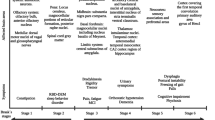Summary
Tetanus toxin and, to a lesser degree, botulinum A toxin inhibit partially and noncompetitively the uptake of [3H]choline into a crude synaptosomal fraction from rat brain cortex. Botulinum toxin acts by its neurotoxin content. The effect is not due to nonspecific synaptosomal damage by the toxins as shown by the lactate dehydrogenase occlusion test, by the absence of swelling and by the preservation of choline stores. The ratio between [3H]acetylcholine and [3H]choline was decreased by both toxins.
Inhibition by either toxin depends strongly on the temperature and duration of incubation, and is preceded by an initial latency period. The effect of tetanus toxin, once manifest, is largely resistant against antitoxin. It is not significantly diminished by pretreatment of the synaptosomes with V. cholerae neuraminidase.
Fixation of 125I-tetanus toxin proceeds fast, is largely independent of temperature and is diminished by pretreatment of the synaptosomes with neuraminidase. Thus only some of the fixation sites, and not the long-chain gangliosides, are required for the effects of tetanus toxin. A slow, temperature-sensitive process links the fixation with the action.
In contrast to rat synaptosomes the chicken preparation is more sensitive to botulinum A than to tetanus toxin, which reflects the differences in sensitivity between live birds and rodents.
Our data underline the similarities between the effects of tetanus and those of botulinum A toxin. Their dependence on time and temperature, the time dependence of efficacy of antitoxin, and the concordance in species specificity indicate that the in vitro system mirros some crucial features of poisoning of isolated organs and live animals.
Similar content being viewed by others
References
Bigalke H, Dimpfel W (1978) Kinetics of 3H-acetylcholine synthesis and release in primary cell cultures from mammalian CNS. J Neurochem 30:871–879
Bigalke H, Habermann E (1980) Blockade by tetanus and botulinum A toxin of postganglionic cholinergic nerve endings in the myenteric plexus. Naunyn-Schmiedeberg's Arch Pharmacol 312:255–263
Bigalke H, Dimpfel W, Habermann E (1978) Suppression of 3H-acetylcholine release from primary nerve cell cultures by tetanus and botulinum A toxin. Naunyn-Schmiedeberg's Arch Pharmacol 303:133–138
Bigalke H, Ahnert-Hilger G, Habermann E (1981) Tetanus toxin, and butulinum A toxin, inhibit acetylcholine release from but not calcium uptake into brain tissue. Naunyn-Schmiedeberg's Arch Pharmacol 316:143–148
Bigalke H, Heller I, Habermann E (1980) Effect of tetanus and botulinum A toxin on the uptake and release of centrally acting neurotransmitters. Naunyn-Schmiedeberg's Arch Pharmacol 313:R26
Bizzini B (1979) Tetanus toxin. Microbiol Rev 43:224–240
Burgen ASV, Dickens F, Zatman LJ (1949) The action of botulinum toxin on the neuromuscular junction. J Physiol (London) 109:10–24
Collingridge GL, Collins GGS, Davies J, James TA, Neal MJ, Tongroach P (1980) Effect of tetanus toxin on transmitter release from the substantia nigra and striatum in vitro. J Neurochem 34:540–547
Gundersen CB, Howard BD (1978) The effects of botulinum toxin on acetylcholine metabolism in mouse brain slices and synaptosomes. J Neurochem 31:1005–1013
Habermann E (1978) Tetanus. In: Vinken PJ, Bruyn GW (eds) Handbook of clinical neurology 33 (I). North Holland Publ. Comp., Amsterdam New York London, p 491
Habermann E, Heller I (1975) Direct evidence for the specific fixation of Cl. botulinum A neurotoxin to brain matter. Naunyn-Schmiedeberg's Arch Pharmacol 287:97–106
Habermann E, Erdmann G (1978) Pharmacokinetic and histoautoradiographic evidence for the intraaxonal movement of toxin in the pathogenesis of tetanus. Toxicon 16:611–623
Habermann E, Bigalke H (1980) High molecular neurotoxins, biochemical and pharmacological aspects. Hoppe-Seyler's Z Physiol Chem 361:259
Habermann E, Dreyer F, Bigalke H (1980) Tetanus toxin blocks the neuromuscular transmission in vitro like botulinum A toxin. Naunyn-Schmiedeberg's Arch Pharmacol 311:33–49
Habermann E, Wellhöner HH, Räker KO (1977) Metabolic fate of 125I-tetanus toxin in the spinal cord of rats and cats with early local tetanus. Naunyn-Schmiedeberg's Arch Pharmacol 299:187–196
Harry J (1962) Effect of cooling, local anesthetic compounds and botulinum toxin on the responses of and the acetylcholine output from the electrically transmurally stimulated isolated guinea-pig ileum. Br. J Pharmacol 19:42–55
Kessler PD, Marchbanks RM (1979) Choline transport is not coupled to acetylcholine synthesis. Nature 279:542–544
Kryzhanovsky GN (1973) The mechanism of action of tetanus toxin: Effect on synpatic processes and some particular features of toxin binding by the nervous tissue. Naunyn-Schmiedeberg's Arch Pharmacol 276:247–270
Lee G, Grollmann EF, Dyer S, Beguinot F, Kohn LD, Habig WH, Hardegree MC (1979) Tetanus toxin and thyrotropin interactions with rat brain membrane preparations. J Biol Chem 254:3826–3832
Marchbanks RM, Wonnacott S (1979) Relationship of choline uptake to acetylcholine synthesis and release. Prog Brain Res 49:77–88
Markwell MAK, Haas SM, Bieber LL, Tolbert NE (1978) A modification of Lowry procedure to simplify protein determination in membrane and lipoprotein samples. An Biochem 87:206–210
Moberg LJ, Sugiyama H (1978) Affinity chromatography purification of type A botulinum neurotoxin from crystalline toxic complex. Appl Environ Microbiol 35:878–880
Rosenblum I (1966) Effects of Cl. botulinum type A toxin on the isolated cat heart. Arch Int Pharmacodyn Ther 159:281
Simpson LL (1980) Kinetic studies on the interaction between botulinum toxin type A and the cholinergic neuromuscular junction. J Pharmacol Exp Ther 212:16–21
Van Heyningen WE (1973) On the similarity of tetanus and cholera toxins. Naunyn-Schmiedeberg's Arch Pharmacol 276:289–295
Vincenzi FF (1967) Effect of botulinum toxin on autonomic nerves in a dually innervated tissue. Nature (London) 28:394–395
Wonnacott S (1980) Inhibition by botulinum toxin of acetylcholine release from synaptosomes: Latency of action and the role of gangliosides. J Neurochem 34:1567–1573
Wonnacott S, Marchbanks RM (1976) Inhibition by botulinum toxin of depolarization-evoked release of [14C]-acetylcholine from synaptosomes in vitro. Biochem J 156:701–712
Wright GP (1955) The neurotoxins of clostridium botulinum and clostridium tetani. Pharmacol Rev 7:413–465
Author information
Authors and Affiliations
Additional information
with the technical assistance of Eva Bolz
Rights and permissions
About this article
Cite this article
Habermann, E., Bigalke, H. & Heller, I. Inhibition of synaptosomal choline uptake by tetanus and botulinum a toxin. Naunyn-Schmiedeberg's Arch. Pharmacol. 316, 135–142 (1981). https://doi.org/10.1007/BF00505307
Received:
Accepted:
Issue Date:
DOI: https://doi.org/10.1007/BF00505307




